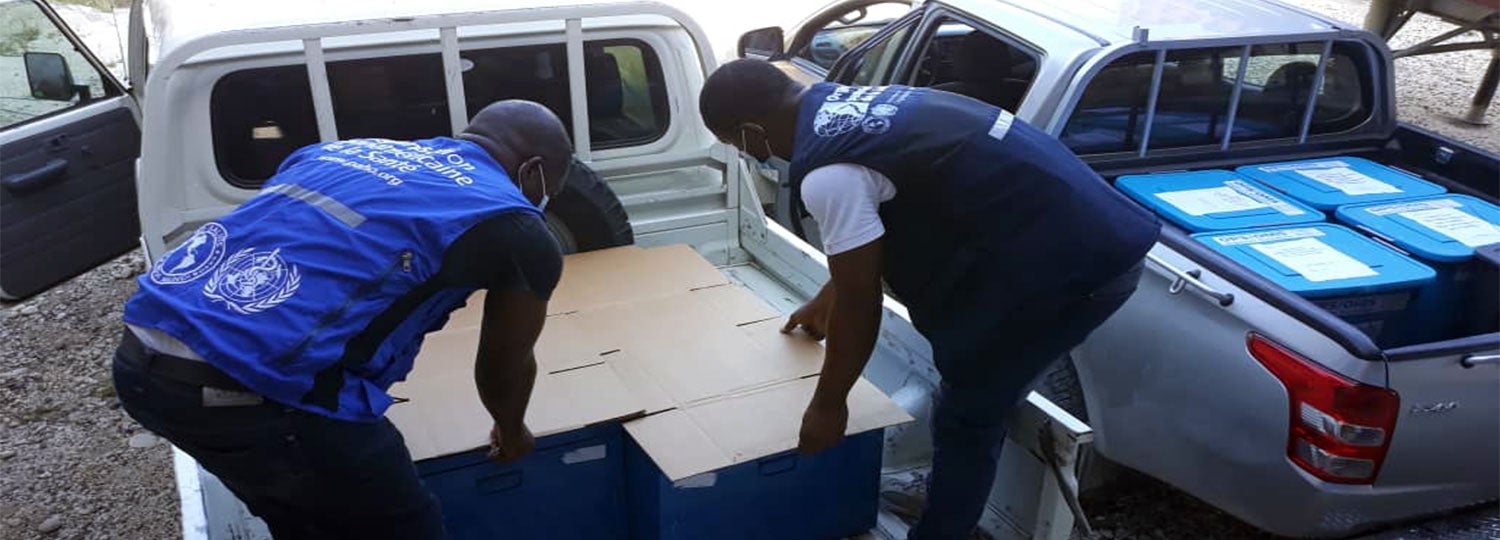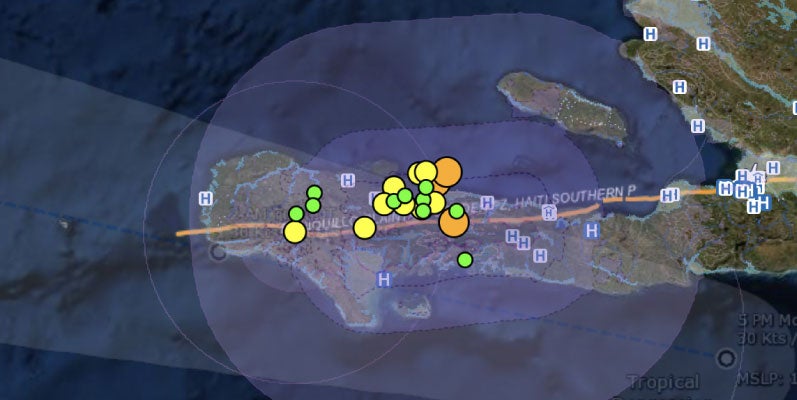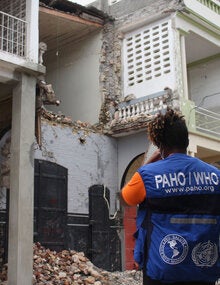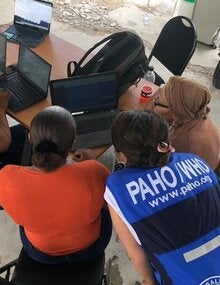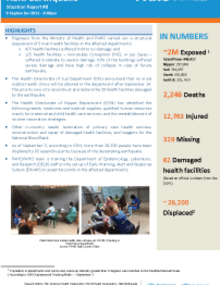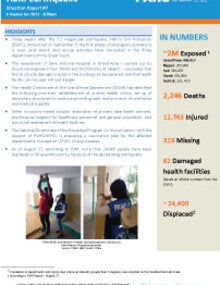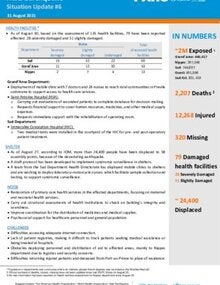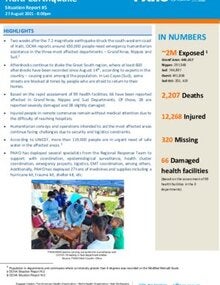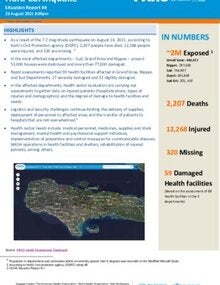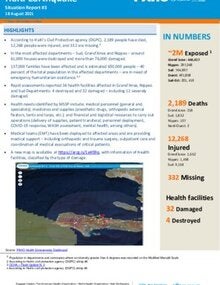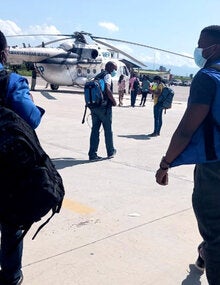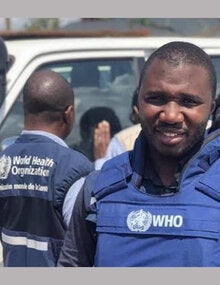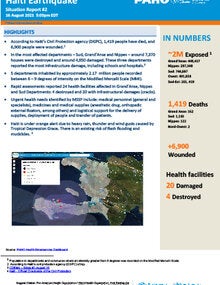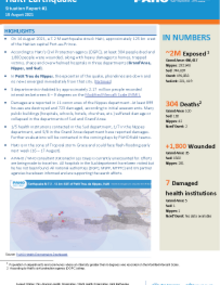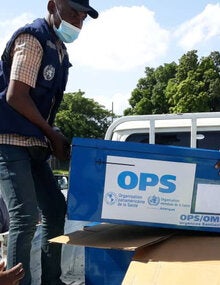Haiti Earthquake August 2021
SITUATION REPORTS donOR apPEAL
A magnitude 7.2 earthquake struck Haiti on Saturday, August 14th 2021 at around 8:29 a.m. local time. The epicenter of the earthquake was recorded 78 miles (125 km) west of the capital city of Port-au-Prince at a depth of 10km below the surface, according to the United States Geological Survey (USGS).
Over 2 million people live in areas exposed to a telluric movement greater than 6 degrees. Around 650,000 people need emergency humanitarian assistance in the three most affected departments.
Situation
People
2,246
Deaths
+12,763
Wounded
329
Missing
+26,200
Displaced
Health facilities
88
Damaged
28
Severely damaged
60
Slightly
damaged
As of September 9, 8:00 pm. EST.
UN Haiti Earthquake Appeal
The UN and its partners appeal for US$187.3M to urgently provide critical relief aid to earthquake-affected Haitians, of which US$ 21.1M are required to support the provision of life-saving health assistance and protect the lives of 225,000 people in need of healthcare services.
With health systems in the three hardest-hit departments facing challenges in keeping pace with the exponential growth in health needs following the earthquake, maintaining access to life-saving assistance and the continuation of other essential health services, including sexual and reproductive health, is a critical response priority.
COVID-19 TEST CENTERS
Haitian Health Foundation. 📍Grande-Anse.
Rapid test
Clinique Bethel. 📍Nippes.
Rapid test
Hopital Immaculée Conception des Cayes. 📍Sud.
Rapid test and PCR
Hopital Saint Boniface. 📍Sud.
Rapid test and PCR
Hopital Bonne Fin. 📍Sud.
Rapid test
Quick Links
What to do before, during and after an earthquake
PAHO/WHO Health Emergencies Department
PAHO deploys experts to support Haiti
Exposed population and hospitals
PAHO Guidelines
Most shelters in the Caribbean are community centers, schools, or churches that are limited in size. The novel coronavirus disease (COVID-19) distancing requirements subsequently reduced the number of persons a shelter can accommodate during the hurricane season. This document reinforces some measures to follow per international emergency shelter protocols factoring in conditions for spacing between beds/cots, recreation areas and ventilation according to The Sphere Handbook, FEMA, and Australian Red Cross. Physical distancing and hygienic standards were modified highlighting that ideal requirements are not always feasible; therefore, we may choose realistic recommendations for practical purposes and suspected cases of COVID-19. See Guide
This practical manual describes how the Response Team is mobilized, and objectives and responsibilities of the Team during different phases of an emergency. It also gives guidelines on mobilizing resources. The manual includes forms and checklists that can be used for health services, emergency shelters, water and sanitation, epidemiologic surveillance, damage and needs assessment, and mental health, among other areas.
This material is useful for gathering and analyzing the information needed for making decisions about effective response. The Manual for the Regional Disaster Response Team is a tool that will assist PAHO/WHO Representatives and their national counterparts to make better assessments when facing emergency or disaster situations.
Damage Assessment and Health Needs Analysis in Disaster Situations (EDAN): PAHO published the Health Damage and Needs Assessment Manual for Disaster Situations in 2004, but the experiences and learning of recent years in the management of emergencies and disasters in the health sector have generated the need to review it and to update the proposed tools for damage and needs assessment. To achieve this, manuals, guides and other existing documents on the subject and the suggestions of multiple experts in disasters in the region have also been taken as reference. This guide is available in Spanish.
News, Reports and Technical Guidances

